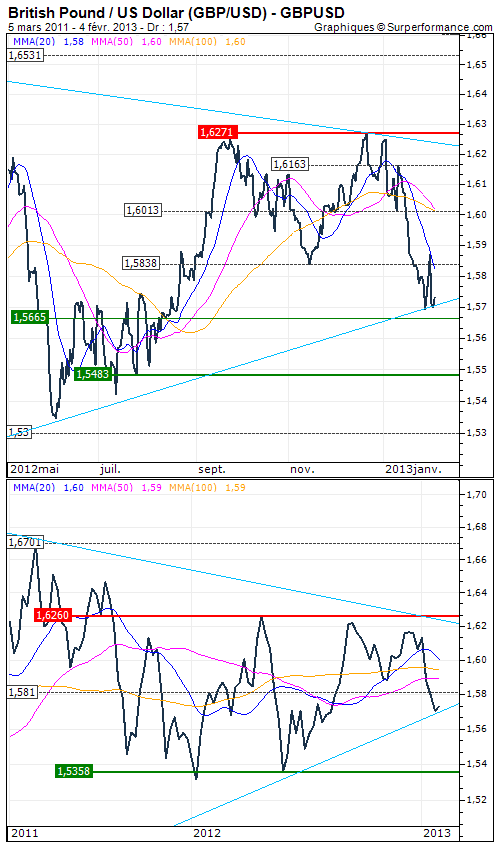British Pound / US Dollar (GBP/USD) : The Bank of England is going to go to war
By Mathieu Burbau
Although growth resumed in the third quarter of 2012, mainly due to a series of extraordinary events, the United Kingdom remained in the cross hairs of investors after the publication of a negative series of statistics in early year. Thus, the activity in the dominant services sector contracted in December for the first time in two years and manufacturing showed an unexpected drop. Figures herald a new setback on January 25 as the country reported a further contraction of GDP in the fourth quarter of last year (-0.3%).
Therefore, if the BoE opted again in January for a status quo of its program of quantitative easing to 375 billion pounds spent in November, British bankers could quickly fall in with David Miles, one member of the committee to require new injections during the last three meetings of the institution. On the other hand Mark Carney, who will take the reins of the monetary authority on July 1, has already said he would put growth at the heart of its strategy for employment, leaving prices fallen despite an inflation rate that stabilizes above the target level of 2%.
Finally, in the longer term, the announcement by David Cameron to hold a referendum on keeping the United Kingdom in the European Union, in case of Conservative victory in 2015, contributes to punish British pound. The project is indeed a source of uncertainty about future investment in Great-Britain.
Graphically, the brief jump of Sterling, drawn up by the Euro and the calming situation in Europe, put GBP above USD 1.58 to contact their 20-day moving average. The time seems appropriate to anticipate a resumption of downward pressure that could cause a return of the British currency towards USD 1.5665 and 1.5483.




